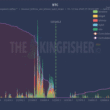The Federal Reserve has chosen to keep interest rates unchanged, signaling caution as ongoing tariff pressures raise fears of persistent inflation. This wait-and-see approach is reverberating through global markets, especially among crypto traders assessing the implications for Bitcoin and other digital assets.
Tariff-Driven Inflation Keeps Fed in Holding Pattern
During the June 18, 2025, Federal Open Market Committee (FOMC) meeting, Chair Jerome Powell emphasized that inflation could see renewed upward momentum due to new tariffs. Stressing the importance of reaching the Fed’s 2% inflation goal, Powell made clear that any decision on interest rate cuts hinges on data proving sustained price stability. The central bank’s latest policy projections—illustrated in its “dot plot”—suggest the possibility of two rate reductions in 2025 but confirm that a “moderately restrictive” stance remains in force for now. This posture is fueling uncertainty across financial sectors, with crypto particularly sensitive to interest rate speculation.
Economic Stability Meets Persistent Uncertainty
Despite Powell’s guarded tone, underlying economic indicators remain sound. The U.S. labor market is robust, with low unemployment and hiring rates hovering at or near full employment. While inflation has cooled off since the pandemic’s peak, it still runs marginally above the Fed’s comfort zone. These mixed signals have left investors parsing Powell’s words for clues—uncertainty over the economic trajectory and monetary policy is keeping both traditional and digital asset markets on edge.
Key Stats & Figures
- Bitcoin Price: $104,746.34 as of June 18, 2025
- Bitcoin Market Cap: $2.08 trillion, reflecting sustained market dominance
- 24-Hour Bitcoin Volatility: -0.05% price movement and a 17.38% drop in trading volume, now $47.44 billion
- 7-Day Bitcoin Performance: A decrease of 3.62%, underscoring volatile investor sentiment
Crypto Markets Mirror Rate Anxiety
Cryptocurrency prices have historically tracked changes in central bank policy, especially during episodes of heightened tariff tension. Recalling the turbulent trading seen in 2018-2019’s trade disputes, today’s digital asset markets are once again bracing for volatility. Both mainstream and alternative investors are recalibrating their positions, weighing the threat of prolonged restrictive policy against the prospect of eventual Fed easing. Coincu’s research team highlights that continuing focus on tariffs and inflation is prompting global investors to diversify and seek safer harbors—sometimes in traditional markets, sometimes in crypto—depending on their appetite for risk.
Conclusion: What This Means for the Market
The Federal Reserve’s rate freeze—and its undiminished concern about tariff-driven inflation—has set the stage for ongoing uncertainty. For crypto markets, this climate could bring more volatility and force renewed strategy shifts as traders and investors grapple with shifting monetary policy cues. All eyes will remain on economic data and Fed statements to gauge when rate relief might finally arrive.
